Have you ever wondered how Arctic plants thrive in the continuous daylight of the polar summer? The unique adaptations of flora and fauna in the Arctic ecosystem allow them to harness energy through photosynthesis even in these extreme conditions. This intricate balance of life in the icy realm showcases the resilience and interconnectedness of organisms within this environment.
Arctic ecosystems are home to a diverse range of species, each playing a vital role in the survival of the ecosystem. From polar bears to Arctic foxes, and from lichens to mosses, every organism contributes to the delicate web of interactions that sustain life in this harsh environment. Explore with us as we look into the complexities of Arctic life and uncover the hidden wonders of this captivating ecosystem.
Key Takeaways
Key Takeaways:
- The Arctic ecosystems boast a remarkable diversity of flora and fauna, uniquely adapted to survive in extreme conditions.
- The intricate food web and distinct geological features play vital roles in sustaining life in the Arctic ecosystem.
- Conservation efforts and a deeper understanding of interactions are crucial for ensuring the resilience and well-being of the Arctic and its inhabitants for future generations.
Diverse Habitats of the Arctic: From Tundra to Marine Ecosystems
Diverse Habitats of the Arctic: Exploring the Unique Ecosystems
The Arctic region harbors icy marine environments where ice algae thrive, serving as the primary producers in the food chain. These microscopic organisms play a vital role in sustaining marine life, including snowy owls, majestic birds that rely on the marine ecosystem for their survival.
Barren Tundra: Vital Habitat for Caribou
The barren tundra of the Arctic is a harsh yet crucial habitat for various species, such as the resilient caribou. These animals are known for their annual migration across vast distances, showcasing their adaptation to the extreme cold and short growing seasons of the tundra.
Boreal Forests: Haven for Arctic Foxes
Within the Arctic region, boreal forests provide shelter for elusive Arctic foxes. These adaptable creatures thrive in the challenging environment of the tundra and boreal forests, demonstrating their remarkable resilience and survival skills in the face of harsh conditions.
Polar Bears: Masters of the Icy Marine Environment
Polar bears, well-adapted to the icy marine environment of the Arctic, rely on ocean currents for hunting seals. These apex predators play a crucial role in the Arctic ecosystem, showcasing their remarkable hunting abilities and dependence on the marine environment for sustenance.
Arctic Rivers: Nutrient Transport and Life Sustenance
Arctic rivers, influenced by permafrost thawing, are essential for transporting nutrients and sustaining life within the region. These rivers play a crucial role in supporting a diverse range of species and maintaining the delicate balance of the Arctic ecosystem.
Interconnected Web of Arctic Species: Emphasizing Conservation Efforts
The intricate web of interactions among the diverse species in the Arctic highlights the delicate balance within the ecosystem. Conservation efforts are crucial to protecting this unique environment and ensuring the survival of the polar bears, Arctic foxes, caribou, snowy owls, and other species that call the Arctic home.
Adaptations and Survival Strategies of Arctic Flora and Fauna

Arctic Adaptations: Flora and Fauna Survival Strategies
1. Arctic Camouflage Mastery
Arctic flora and fauna have perfected the art of camouflage in the icy surroundings, aiding in their survival by blending seamlessly with the environment. This skill helps them evade predators and enhance their hunting prowess.
2. Hibernation Tactics
Hibernation is a common strategy among Arctic animals to conserve energy during the harsh winter months when food is scarce. By entering a state of dormancy, these creatures can survive the extreme cold.
3. Insulating Fur
The thick fur of Arctic creatures acts as insulation against the cold, trapping heat close to their bodies and preventing frostbite. This adaptation is crucial for maintaining body temperature in the frigid Arctic climate.
4. Ice Adaptations in Marine Life
Marine mammals like seals have specialized flippers and streamlined bodies for efficient swimming in icy waters. These adaptations help them navigate the challenging Arctic ocean environment.
5. Burrowing for Shelter
Creatures such as lemmings resort to burrowing to escape the chill and find shelter from the harsh Arctic conditions. This strategy provides them with a safe haven during the cold winter months.
6. Migration Routes for Survival
Arctic birds rely on migration routes to travel vast distances to reach breeding grounds or warmer climates. This journey is critical for their survival and reproduction in the Arctic region.
7. Freeze Tolerance Mechanisms
Certain Arctic organisms have developed freeze tolerance mechanisms to withstand extreme temperatures without cellular damage. This adaptation ensures their survival in the face of the harsh Arctic environment.
8. Efficient Arctic Metabolism
The unique Arctic metabolism of flora and fauna enables them to efficiently utilize resources in a region where food can be scarce. This adaptation helps them thrive in the challenging Arctic ecosystem.
The Arctic Food Web: Predators, Prey, and Plant Life
Exploring the Arctic Food Web
1. Keystone Predators in the Arctic Ecosystem
In the harsh Arctic environment, predators like polar bears play a crucial role as keystone species. By controlling the population of herbivores such as Arctic hares and musk oxen, these predators help maintain the delicate balance of the ecosystem.
2. Energy Transfer in Arctic Food Chains
The intricate Arctic food chains begin with primary producers like algae and lichens, which are then consumed by herbivores. This energy transfer showcases the efficiency of the ecosystem, with only about 10% of energy being passed on to each subsequent trophic level.
3. Resilience Through Nutrient Cycling
The interconnectedness of species in the Arctic ecosystem, along with the vital role of decomposers like fungi and bacteria, ensures the resilience of the ecosystem. These organisms play a key role in nutrient cycling, contributing to the overall health of the environment.
4. Adaptations and Survival Strategies
Species in the Arctic have developed unique adaptations and survival strategies to thrive in this extreme environment. From the Arctic fox’s camouflaged fur to the polar bear’s hunting prowess, each species has evolved to make the most of limited resources and harsh conditions.
5. Climate Change Impacts
The Arctic ecosystem faces challenges due to climate change, affecting the availability of resources and altering species interactions. Understanding these impacts is crucial for conservation efforts and the long-term sustainability of this fragile ecosystem.
Migratory Patterns and Seasonal Behaviors in Arctic Wildlife
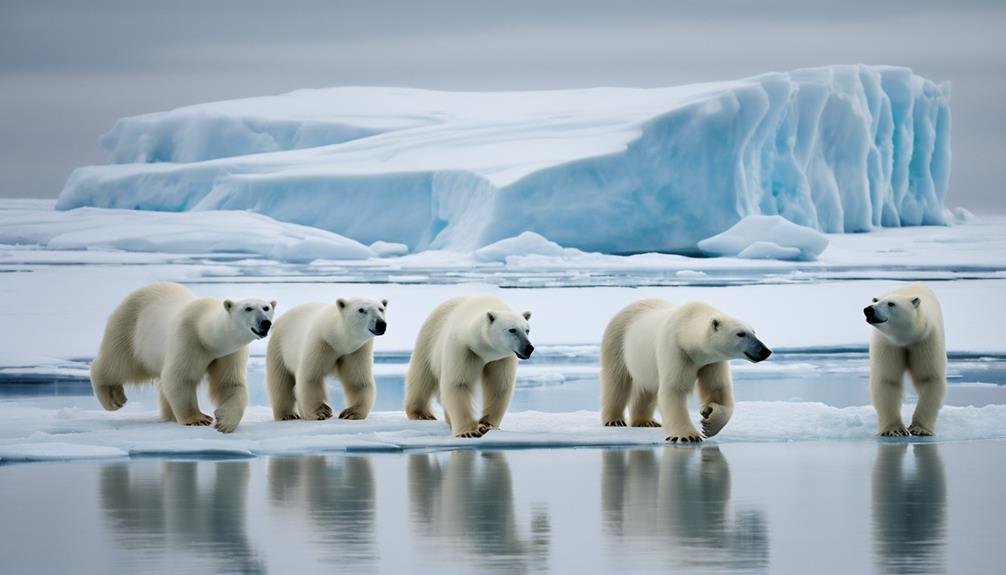
Arctic Wildlife Migration and Seasonal Behaviors
1. Avian Marvels: Epic Migration Routes
Witness the awe-inspiring journeys of Arctic birds as they traverse vast distances to navigate the Arctic expanse. From snow geese to puffins, these avian travelers showcase remarkable adaptability in their migration routes, guided by ancient instincts to seek optimal breeding grounds and food sources.
2. Marine Giants: Whale Migration Insights
Dive into the world of Arctic whales and uncover their precise seasonal movements. From bowhead whales to belugas, these magnificent marine mammals exhibit a deep connection to the changing Arctic environment, showcasing their resilience in adapting to shifting conditions for feeding and breeding.
3. Caribou Chronicles: Synchronized Migration Patterns
Explore the synchronized migration patterns of Arctic caribou herds, showcasing their strategic movements in tandem with the shifting seasons. These majestic creatures navigate vast distances to optimize their survival in the Arctic wilderness, reflecting a harmonious balance with the natural rhythms of the environment.
4. Polar Predators: Strategic Adaptations
Take, for example, polar bears and their strategic movement and hunting tactics amidst changing ice conditions where they adapt with the environment to ensure survial. These apex predators utilize the shifting ice to their advantage, showcasing their adaptability in pursuing prey and thriving in the dynamic Arctic landscape.
5. Fox Tales: Seasonal Survival Strategies
Uncover the seasonal adaptations of Arctic foxes as they navigate the harsh Arctic conditions with finesse. From changing fur colors to specialized hunting techniques, these resourceful creatures demonstrate their ability to survive and thrive in the challenging Arctic environment through clever behavioral strategies.
6. Owl Odyssey: Long-Distance Migrations
Embark on the journey of snowy owls as they undertake long-distance migrations to reach their breeding grounds. These majestic birds traverse vast distances with precision and grace, highlighting their unique migration behaviors and the importance of their breeding habitats in the Arctic wilderness.
7. Reindeer Wisdom: Traditional Herding Practices
Discover the traditional knowledge and sustainable practices embedded in Arctic reindeer herding. From seasonal migrations to cultural significance, these practices reflect a deep connection to the land and a harmonious coexistence with Arctic wildlife, emphasizing the importance of preserving indigenous traditions in the face of environmental changes.
8. Wolf Pack Dynamics: Cooperative Migrations
Witness the intricate pack dynamics of Arctic wolves during migrations, showcasing the importance of cooperation in navigating the Arctic terrain. From hunting strategies to social hierarchies, these intelligent predators demonstrate the power of teamwork in adapting to the challenges of the Arctic landscape and ensuring the survival of the pack.
Human Impact and Indigenous Cultures Within Arctic Ecosystems
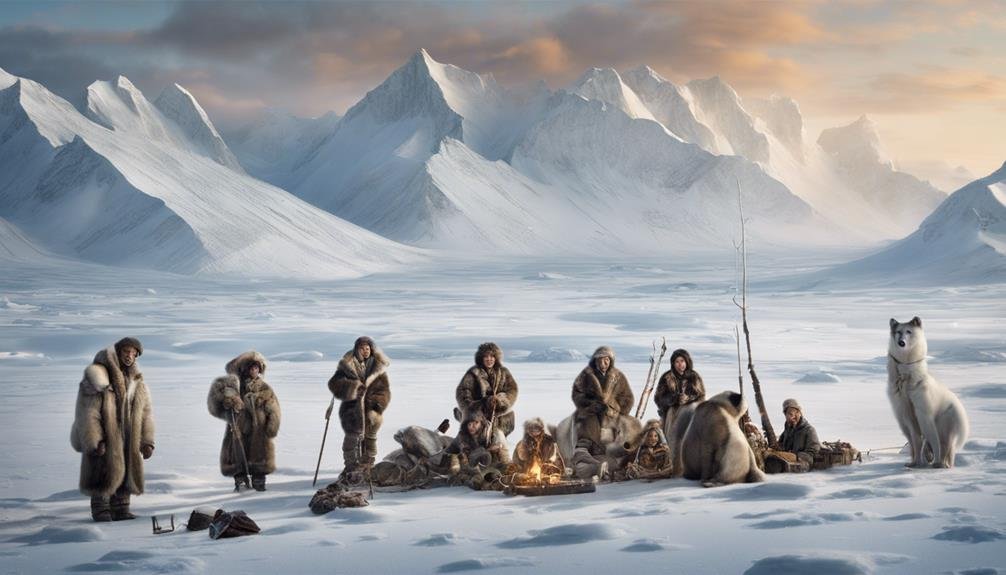
Indigenous Cultural Heritage in Arctic Ecosystems:
Spiritual Beliefs and Subsistence Lifestyles:
Indigenous communities in the Arctic have deep-rooted ties to the environment, with spiritual beliefs and traditional practices revolving around the resources and landscapes of the region.
Resource Management Strategies:
Sustainable practices are integral to indigenous cultures, as they rely on centuries-old resource management strategies to ensure the well-being of their communities and the preservation of their way of life.
Environmental Challenges Facing Arctic Ecosystems:
Threats to Ecological Balance:
Modern activities like pollution, resource extraction, and climate change pose significant threats to the delicate ecological balance of the Arctic ecosystems, impacting both wildlife and indigenous populations.
Conservation Efforts and Traditional Knowledge:
The integration of traditional knowledge with conservation efforts is crucial in mitigating the harmful effects of human activities on the Arctic ecosystems, emphasizing the importance of sustainable coexistence between modern society and indigenous cultures.
Threats and Challenges Facing Arctic Biodiversity

Urgent Threats to Arctic Biodiversity
The Arctic biodiversity is under severe threat from multiple sources, posing significant challenges to the delicate balance of this unique ecosystem.
Rapid Climate Change
The Arctic is experiencing unprecedented rates of climate change, with soaring temperatures, melting ice, and shifting habitats. These changes are disrupting the traditional adaptations of Arctic species, pushing them to their limits.
Invasive Species Invasion
Introduction of invasive species through human activities is a major concern in the Arctic. These invasive species outcompete native flora and fauna, disrupting the intricate ecological relationships that have evolved over centuries.
Human-Induced Habitat Destruction
Activities like oil drilling and infrastructure development are causing irreversible habitat destruction in the Arctic. This fragmentation and degradation of landscapes are impacting the resilience of the entire ecosystem.
Need for Urgent Conservation Efforts
The environmental impact of these threats is profound, necessitating immediate action to protect the Arctic wildlife and implement adaptation strategies. Safeguarding the unique Arctic biodiversity is crucial for the survival of numerous species and the ecological balance of this fragile ecosystem.
Unique Geological Features of the Arctic and Their Ecological Significance
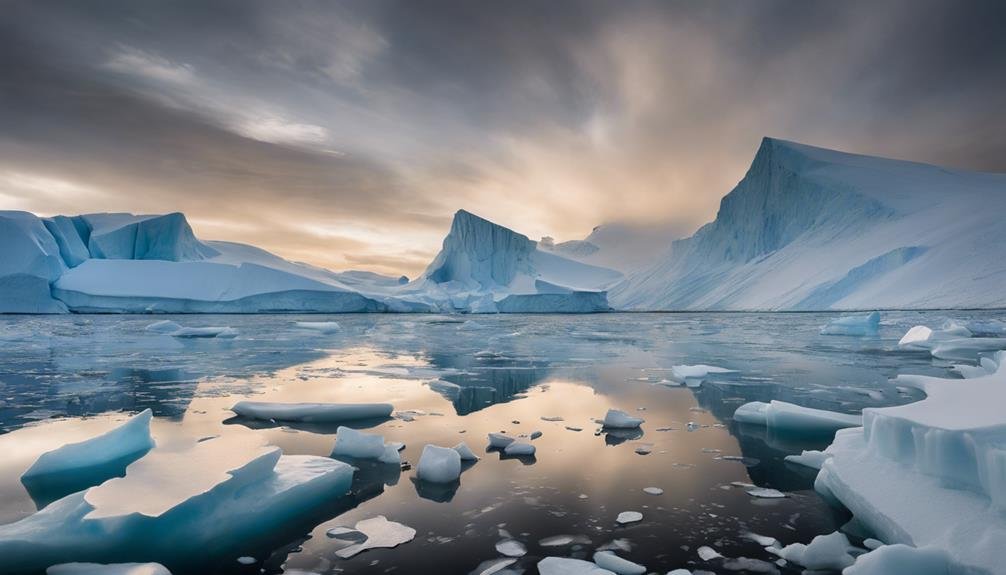
Exploring Arctic Geological Features and Their Impact on Ecosystems
Permafrost Dynamics:
The intricate web of Arctic ecosystems is deeply intertwined with the dynamics of permafrost. These frozen layers beneath the surface regulate water flow, support unique plant communities, and store vast amounts of carbon. However, the thawing of permafrost due to climate change can lead to land instability, affecting the delicate balance of the ecosystem.
Glacial Interplay:
Glaciers not only sculpt the stunning landscapes of the Arctic but also play a vital role in providing freshwater to diverse species. The retreat of glaciers, driven by global warming, threatens the availability of freshwater resources for both terrestrial and marine organisms, highlighting the interconnectedness of geological and ecological processes.
Volcanic Environments:
Within the Arctic, volcanic formations create niche habitats for specialized plant and animal species. These volcanic ecosystems showcase extreme conditions where resilient organisms have evolved to thrive. The unique geological features of these areas contribute to the rich biodiversity of the region.
Species Habitat Zones:
The diverse geological formations of the Arctic shape distinct habitat zones that support a wide array of species. From mountain ranges to coastal plains, each geological feature influences the distribution and survival of different organisms. Understanding these habitat patterns is crucial for effective conservation strategies and sustainable ecosystem management in the Arctic.
Interactions Between Marine and Terrestrial Ecosystems

Interconnected Arctic Ecosystems
Amidst the vast Arctic expanse, a complex web of interactions connects the marine and terrestrial ecosystems. Marine-derived nutrients, such as phosphorus and nitrogen, play a vital role in sustaining the delicate balance of the Arctic. These nutrients from the marine environment influence the growth and productivity of terrestrial plants, fostering a thriving ecosystem.
Trophic Relationships and Energy Flow
Energy flows through the Arctic ecosystems via trophic relationships. Marine species like fish and seals serve as a crucial food source for terrestrial predators like polar bears and foxes. This dynamic interplay ensures the transfer of energy across different habitats, supporting the diverse array of species that call the Arctic home.
Environmental Influences and Disruptions
Environmental factors, including climate change, can disrupt these intricate interactions. Changes in temperature and sea ice cover can impact food availability and habitat connectivity for both marine and terrestrial species. These disruptions highlight the vulnerability of Arctic ecosystems to external pressures and emphasize the need for conservation efforts.
Interconnected Dynamics
The Arctic ecosystems are intricately linked, with changes in one ecosystem having cascading effects on the other. Understanding and preserving these interconnected dynamics are essential for maintaining the resilience of Arctic communities in the face of environmental challenges. By safeguarding these interactions, we can ensure the well-being of the unique species that rely on the delicate balance between marine and terrestrial ecosystems in the Arctic.
Conservation Efforts and Protected Areas in the Arctic
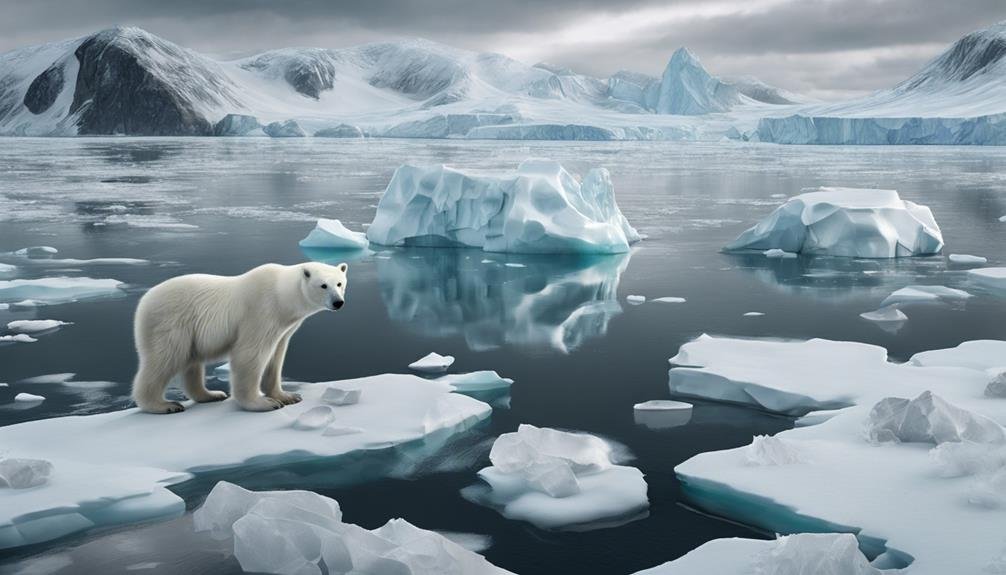
Key Conservation Efforts in the Arctic:
- Protected Habitats: Preserving undisturbed areas is crucial for safeguarding the homes of Arctic wildlife.
- Migration Routes: Establishing pathways for animals to move between habitats supports genetic diversity and adaptation to changing environments.
- International Collaborations: Working together across borders ensures coordinated conservation actions for the benefit of Arctic ecosystems.
- Ecosystem Rehabilitation: Restoring degraded areas helps maintain the resilience of Arctic habitats against various threats.
These conservation strategies, combined with efforts focused on species protection, climate resilience, and indigenous stewardship, contribute to the sustainable management of the Arctic’s unique ecosystems.
Additionally, promoting sustainable tourism, fostering research partnerships, and implementing monitoring programs are essential for advancing conservation initiatives and ensuring the long-term health of the Arctic environment.
The Role of Microorganisms in Arctic Ecosystems
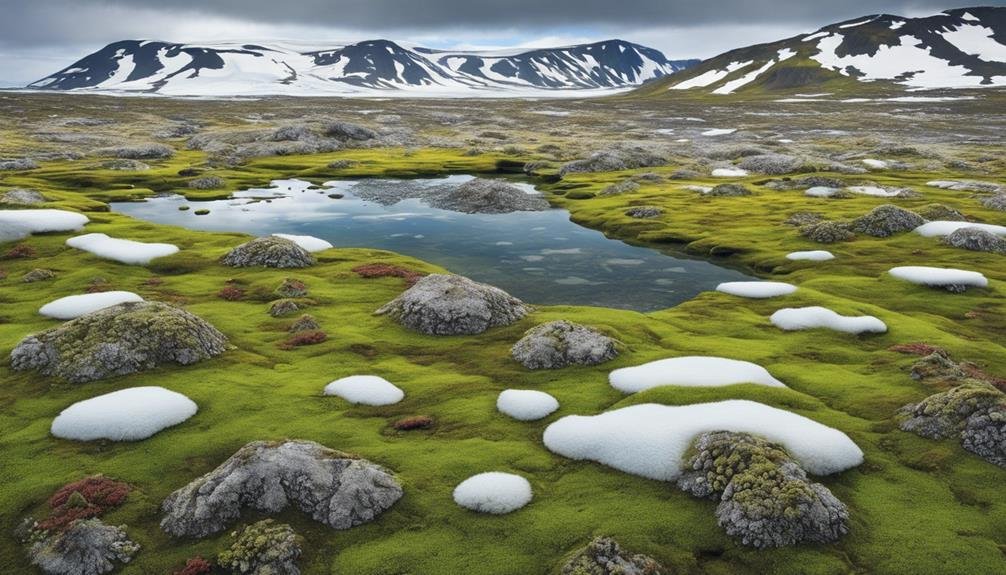
Arctic Microorganisms: Unsung Heroes of the Ecosystem
Diverse Microbial Communities
In the intricate web of Arctic ecosystems, microorganisms are the unsung heroes, forming diverse microbial communities essential for ecosystem functions. These tiny organisms play a pivotal role in nutrient cycling and are crucial for breaking down organic matter to recycle elements like carbon and nitrogen.
Climate Regulation
Arctic microbes aren’t just microscopic beings; they’re key players in climate regulation. Through processes like carbon sequestration and methane production, these microbes significantly influence the region’s greenhouse gas balance.
Adaptations for Survival
Thriving in extreme cold and nutrient-poor environments, Arctic microorganisms showcase remarkable resilience. Their unique adaptations enable them to survive and thrive in harsh conditions where others struggle.
Trophic Interactions
Microorganisms in the Arctic aren’t solitary beings; they engage in trophic interactions vital for supporting higher trophic levels in the food webs of this region. Their role in sustaining life in this harsh habitat is crucial and can’t be underestimated.
Understanding Ecosystem Dynamics
Frequently Asked Questions
What Is the Diversity of the Arctic?
What factors limit species richness in the Arctic?
Answer: Extreme climate patterns in the Arctic limit species richness, but the species that survive showcase remarkable adaptation strategies.
How Do Organisms Interact in the Arctic Ecosystem?
Question: How do organisms interact in the Arctic ecosystem?
Answer: Organisms in the Arctic ecosystem interact through intricate food webs, predatory relationships, and mutualistic partnerships. These interactions are influenced by competition dynamics, climate impacts, and migration patterns, shaping behavioral adaptations and reproductive strategies. These factors ultimately impact habitat utilization and community structures crucial for survival in the Arctic environment.
What Is Different About the Ecosystem of the Arctic That Allows It Support a Greater Diversity of Land Animals Than the Antarctic?
Question: What factors contribute to the greater diversity of land animals in the Arctic compared to Antarctica?
Answer: Climate variations, food availability, migration routes, and habitat diversity in the Arctic create a conducive environment for a wider range of land animals to thrive. These factors, along with unique adaptations and evolutionary history, play a crucial role in shaping the distribution and abundance of species in the Arctic ecosystem.
How Do Arctic Tundra Ecosystems Compare in Biodiversity to Other Types of Ecosystems?
What is the impact of extreme conditions on biodiversity in Arctic tundra ecosystems?
Answer: Biodiversity in Arctic tundra ecosystems is lower due to extreme conditions. These conditions shape species distribution, leading to specialized adaptations for survival. The climate factors play a crucial role in shaping the ecosystem, resulting in simpler food web dynamics compared to rainforests. Animal migrations, soil characteristics, and plant communities in the Arctic tundra reflect the seasonal changes.
Conclusion
To sum up, the Arctic ecosystems showcase a remarkable diversity of flora and fauna, each uniquely adapted to thrive in the harsh conditions of the region.
The intricate food web and distinct geological features all contribute to sustaining life in this ecosystem.
Through conservation efforts and a deeper understanding of these interactions, we can ensure the resilience and well-being of the Arctic and its inhabitants for future generations.


